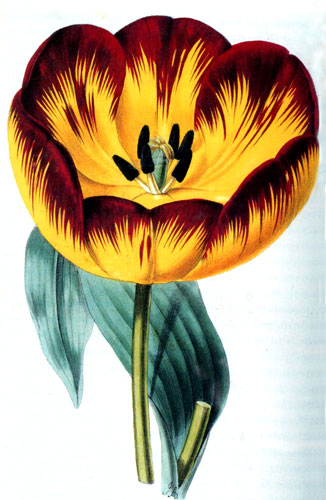Here’s some cutting-edge news from the 182-year-old Wakefield and North of England Tulip Society’s latest newsletter:

“A consortium of three Dutch companies . . . have sequenced tulip DNA using Oxford Nanopore Technologies and the TULIP algorithm (The Uncorrected Long-read Integration Process).
“It seems the tulip has the biggest genome that has ever been sequenced. Its size is estimated to be nearly 11 times larger than that of humans.
“Far more work lies ahead to analyze the data but the intention is to link gene sequences to particular characteristics that can be manipulated to ‘transform tulip breeding, making it faster, more predictive, and above all “greener” because we will focus on varieties that can be grown sustainably,’ according to Hans van den Heuvel of Dümmen Orange [one of the largest Dutch flower breeders and growers]. This would mean using genetic engineering to raise tulips with in-built resistance to pests and diseases, thus reducing the use of chemicals, for ecological and financial benefits.”
At Dümmen Orange’s website, van den Heuvel goes on to say that “the tulip genome makes the human genome look tiny: the entire human genome fits into one tulip chromosome.” Bas Reichert, CEO of the lab that sequenced the genome, says the project “proves that this technology is now feasible and affordable” and will “further accelerate developments in the ornamental sector.”
So are fragrant, deer-proof tulips that return and bloom for decades just around the corner? Maybe not, but it looks like our centuries’ old quest to develop better and better tulips is about to enter a momentous new stage.












